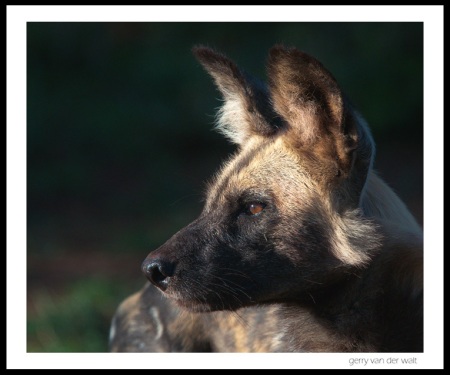Hi everybody,
I’m back from an absolutely amazing trip to the Kgalagadi Transfrontier Park. The Kgalagadi is an arid park situated in the northwestern parts of South Africa and extends into both Botswana and Namibia. There is a lot of space, sand, and silence, and makes for one of the most special and unique wildlife and nature destinations I have ever visited. One thing that makes it special is the fact that there is no cellular signal or internet, which is why I could not do a post last week. Hey, we all need a break every now and then. This is where we stayed.

Beautiful hey? Anyway, I’m back and apart from a huge amount of new images I also had a lot of time to think about and reassess my own way of approaching wildlife photography. You see, too many if us fall into a rut and keep on producing the same type of images again and again. Others of us get so caught up in the technical side of the craft that we end up producing technically superb, but cold and lifeless images. In the coming week, we will be looking at many of these pitfalls and how you can make sure you keep on growing as a wildlife photographer, but for today I wanted to have a look at ISO.
ISO, as you know, refers to your cameras light gathering ability. A low ISO, such as 200, means that your camera is not as sensitive to light and you need good, strong light on your subject to create quality images. This is where a lot of people get stuck, but more on that in a second. A high ISO, such as 1600, means that your camera is a lot more sensitive to light and that you can shoot in lower light conditions but then there is an increase in digital noise, or grain, in your images.
For quite some time, many people have avoided shooting at high ISO settings like the plague! The thought of having even a small amount of noise in your image is just completely unacceptable! Or is it?
With higher ISO settings comes faster shutter speed. This is because the higher ISO allows the camera’s sensor to capture a lot more light. A faster shutter speed, in wildlife photography, means you freeze more of the movement and you get sharper images.
I know of too many photographers that always use the lowest possible ISO settings and then have to use very challenging shutter speeds to try and freeze the action. Why? Rather push the ISO up a bit and use a faster shutter speed. The noise reduction of programs like Lightroom is so advanced these days that you could easily fix things up afterwards. Worst case scenario: you have a slightly noisy, grainy image. In the old days, it was a part of what we did!
I always used try and keep my ISO as low as possible and never wanted to go above 200, but this I have changed. Here is a breakdown of my ISO setting from the two cameras I used on the Kgalagadi trip.

You can see that a lot of my images were taken at around ISO 500. Also, depending on the camera, I sometimes went as high as ISO 1600. This is one of the images I shot at a high ISO.

The early morning light on the Black-Backed Jackal was amazing, but not strong enough for me to use a low ISO setting. I pushed my ISO up to 1600, which then gave me a fast enough shutter speed—in this case 1/200—to get a nice, crisp image.
The following image was also taken at ISO 1600 and was where the little jackal above was heading to.

Awesome, early morning sightings and if I was stuck on never using high ISO settings, I would not have gotten the images. Even zoomed in to 100% the noise levels are acceptable and with a bit of love in Lightroom, I was able to get the image perfectly crisp, sharp and virtually noise free.
The following image was taken at an ISO of 800, as the overcast light was nice and soft but not too bright.

The juvenile Gabar Goshawk was trying to get a little warm spot and hide from the weather. I was able to get a great, crisp image of him even with the soft light.
The last exmaple, below, was shot at ISO 500.

Flat on my stomach, I spent an entire morning photographing the ground squirrels at one of the camps we stayed at. I decided on an ISO of 500 as they kept on moving into and out of the shade. In the shade, the ISO helped me to get a fast enough shutter speed to freeze the action and in the light I was still quite happy with the ISO. If I were to keep on changing up and down I would have missed some of the shots!
So, I guess the bottom line is… don’t be afraid to push your ISO. Yeah, yeah, some cameras deal with high ISO better than others, but rather get the shot and deal with a bot of noise rather than miss it completely!
Get out there this weekend, push your ISO and challenge the fading light. This is, after all, the time when wildlife seems to be at its most active! When you are all done, make sure to upload some of your images to the Bush Warriors Photo of the Day Contest to share with all of us. 🙂
If you are keen on some more images from the Kgalagadi, I will be posting some of them to the Photo-Africa blog by the end of the day.
Keep shooting and I’ll see you next week.
Gerry van der Walt

































